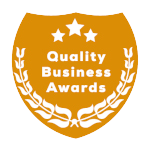Do you need a crown but dislike the thought of two trips to the dentist with a two week period of wearing an uncomfortable temporary crown in-between? Anyone who has had a crown, knows that this is just part of the process. But does it have to be?
With CEREC, or same appointment dental crowns, it all gets done in one visit!
CEREC, or single appointment crowns, are a sophisticated computer-aided system for producing durable high-quality ceramic restorations. It is simple to use, fast and is excellent for conserving the natural tooth. CEREC is ideal for patients who want a solid ceramic, authentic tooth-coloured alternative to traditional crowns made in a dental lab – all completed in one visit.
Are CEREC crowns new?
CEREC technology is not new. In fact, it has been around for nearly 30 years. Then why are they not offered by every dentist? Many dental offices have not invested in this technology, due to start-up costs and additional training in computer dental assisted design and milling.
Dr. Mahara at Downtown Nanaimo Dental Group, however, has chosen to invest in this valuable CEREC Crown technology so that all of our patients can minimize their time spent away from work and family yet also receive optimal restorative results.
Benefits of CEREC
CEREC crowns allow tooth restorations to be completed in a single session but there are several other benefits. First of all impressions are done with super accurate digital impressions. This means no more putty-like material in your mouth to get an impression.
Secondly, the tooth is prepped and the crown fitted during the same visit, so there is no need for a temporary crown. Temporary crowns, typically worn for about two weeks with traditional crowns can come loose or weaken during wear. This is a thing of the past with CEREC technology.
Since CEREC crowns are made of a solid block of ceramic, they are considered to have a very strong structure.
Not only are CEREC crowns known for being strong, but ceramic provides a very natural looking crown which reflects light in a similar way to our natural tooth structure. Additionally, the ceramic blocks come in a wide variety of shades and colours, so your crown can be selected to blend in naturally with your surrounding teeth.
Limitations
Like every great thing, it may not work in every situation. CEREC technology is not right for all patients in all situations. Depending on the circumstances and location of the tooth to be restored, other types of crowns may be more appropriate.
Conclusion
CEREC crowns are convenient and offer benefits such as excellent structural strength and natural appearance. They are not offered by every dental office and there are some limitations to their application. Downtown Nanaimo Dental Group is proud to bring CEREC technology to our patients. Please call to book an appointment with Dr. Mahara today.






